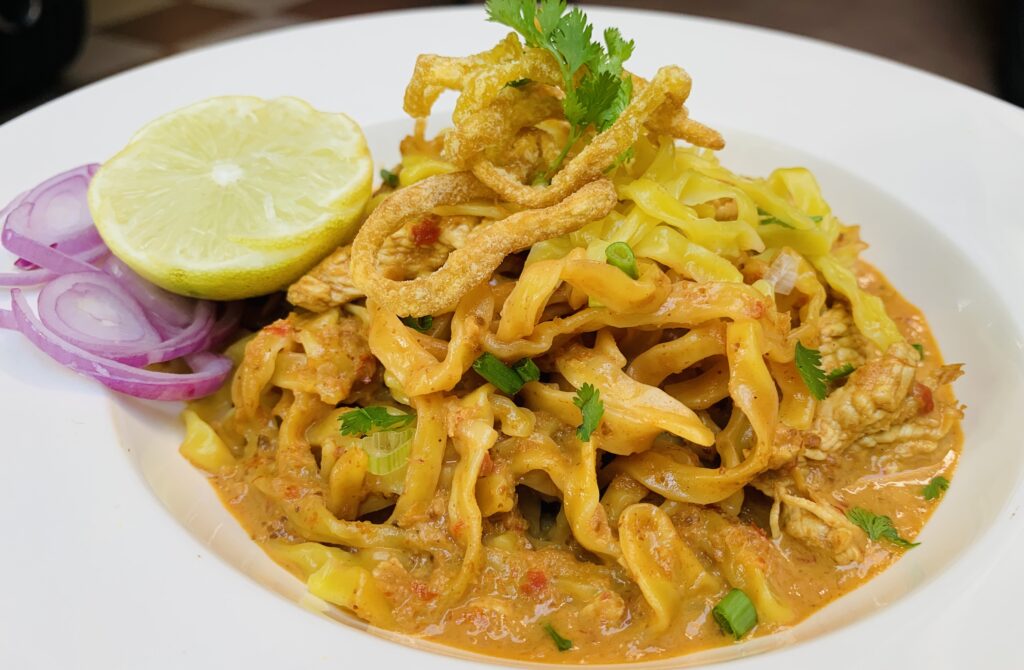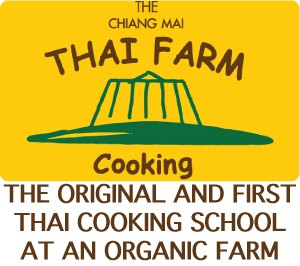
Table of Contents
Northern Food in Thailand : When most travelers think of Thai food, their minds immediately jump to spicy papaya salad, creamy green curry, or the ever-popular Pad Thai. While these dishes certainly represent the vibrant palette of Thai cuisine, they mostly stem from the central and southern regions. Venture north, however, and you’ll find a very different — and equally delicious — culinary landscape waiting to be discovered.
The food of Northern Thailand, often referred to as Lanna cuisine, is earthy, aromatic, and steeped in centuries of cultural tradition. Influenced by neighboring Myanmar, Laos, and even southwestern China, northern Thai food boasts a unique combination of flavors and techniques that distinguish it from other regional cuisines within the country.
A Taste of the Mountains
Northern Thailand is a region defined by its misty mountains, dense forests, and cooler climate — factors that all play a role in the type of food locals eat. Unlike the hot and fiery curries found in the south, northern Thai dishes tend to be milder, more herbal, and often fermented. The cuisine is built on accessibility and preservation, drawing on the ingredients that thrive in the region’s terrain: mushrooms, herbs, root vegetables, and wild greens.
Sticky rice (khao niao) is a staple in every meal — not jasmine rice, which dominates the central Thai plate. It’s eaten with the hands, rolled into small balls, and dipped into an array of rich, spicy, or sour dips known as nam prik.
Signature Northern Dishes to Try
If you’re lucky enough to travel through Chiang Mai, Chiang Rai, or the rural provinces nearby, here are some dishes you must not miss:
Khao Soi
Arguably the most famous dish in the north, khao soi is a soul-warming curry noodle soup made with egg noodles, rich coconut milk, and a blend of curry paste, often served with chicken or beef. What sets it apart is the topping of crispy fried noodles that add texture to every bite. Lime wedges, pickled mustard greens, and shallots are served on the side, allowing diners to adjust the balance of sourness and crunch to their liking.
Sai Ua (Northern Thai Sausage)
This intensely flavorful sausage is made with ground pork, herbs, and spices like lemongrass, kaffir lime leaves, galangal, and chili. It’s grilled until crispy and smoky, then sliced and served as a snack or part of a larger meal. The strong herbal profile gives it a refreshing and spicy kick.
Nam Prik Noom & Nam Prik Ong
Nam prik noom is a roasted green chili dip, while nam prik ong is a chunky tomato-based dip with ground pork. Both are typically served with a colorful basket of steamed vegetables, sticky rice, and crispy pork rinds. These dips embody the social aspect of northern cuisine — meals meant to be shared and eaten together, piece by piece.
Gaeng Hung Lay
This Burmese-inspired pork curry is a rich and tender dish slow-cooked with garlic, ginger, and tamarind. Unlike most Thai curries, gaeng hung lay does not contain coconut milk, which gives it a thinner, more gravy-like consistency. It’s aromatic, slightly sour, and often eaten during celebrations or festivals.
More Than Food — A Cultural Experience
What makes northern Thai food so special isn’t just the taste — it’s the way it connects people to their heritage. In villages and family kitchens, recipes are passed down orally, and meals are rituals of community. Sitting on the floor around low tables, families eat from shared bowls, and every bite tells a story.
The city of Chiang Mai has become a hub for those eager to learn more about the intricacies of northern cooking. Many visitors take a course at a Thai cooking school, where they can shop at local markets, pick fresh herbs from organic gardens, and prepare traditional Lanna dishes under the guidance of experienced instructors. These classes often include cultural insights that go far beyond the recipe — like how to fold banana leaves for steaming or the symbolic meanings of certain ingredients during rituals.
Street Food & Markets
Night markets are one of the best places to explore the flavors of the north. The Chiang Mai Gate Market and Sunday Walking Street Market offer a dazzling array of local treats: spicy sausage, grilled skewers, sweet sticky rice in bamboo, and steaming bowls of noodle soup. You’ll also find seasonal specialties depending on the harvest — mushrooms after the rains, or preserved bamboo during dry spells.
Don’t be afraid to try dishes that look unfamiliar. Ask vendors questions — most are more than happy to explain what you’re eating. This is where you’ll find the soul of northern food: humble, handmade, and deeply tied to the land.
Vegetarian & Vegan Options
While meat and fish do play a big role in northern cooking, there are also plenty of options for vegetarians. Many dishes can be easily adapted — especially dips, soups, and stir-fries. In Chiang Mai in particular, the growing wellness and digital nomad scenes have led to a rise in plant-based restaurants that celebrate northern flavors in innovative ways.
Try jackfruit khao soi, tofu laab (a spicy herb salad traditionally made with meat), or mushroom skewers glazed with tamarind sauce. The emphasis on herbs and fermented vegetables makes this cuisine particularly friendly to those avoiding meat.
Bringing the North Home
One of the most rewarding parts of exploring northern Thai cuisine is how accessible it can be. With a few key ingredients — lemongrass, galangal, sticky rice, and Thai chili — you can begin recreating the experience at home. Better yet, consider bringing back some spice pastes or traditional cookware from your travels.
A class at a Thai cooking school can give you the foundational techniques you need to bring a taste of Lanna to your own kitchen. It’s more than just cooking — it’s an invitation to slow down, to share meals, and to honor tradition.
Northern food in Thailand is about more than what’s on your plate. It’s about identity, history, and connection. Whether you’re slurping khao soi in a bustling market or crafting your first sausage at home, each dish invites you into a story centuries in the making.
So next time you visit Thailand, don’t just stick to the well-trodden paths of central cuisine. Head north — and eat like the locals do. You won’t just taste something new. You’ll understand Thailand a little deeper.

Pingback: how to order androxal cheap uk buy purchase
Pingback: purchase enclomiphene canada drugs
Pingback: buy rifaximin canadian discount pharmacy
Pingback: order xifaxan cost australia
Pingback: get staxyn cheap store
Pingback: free avodart canada
Pingback: kamagra ups
Pingback: cheap generic dutasteride canada
Pingback: canada flexeril cyclobenzaprine no prescription
Pingback: ordering gabapentin generic where to buy
Pingback: how to order fildena cheap online pharmacy
Pingback: cheap itraconazole australia pharmacy
Pingback: kanadští dodavatelé kamagra